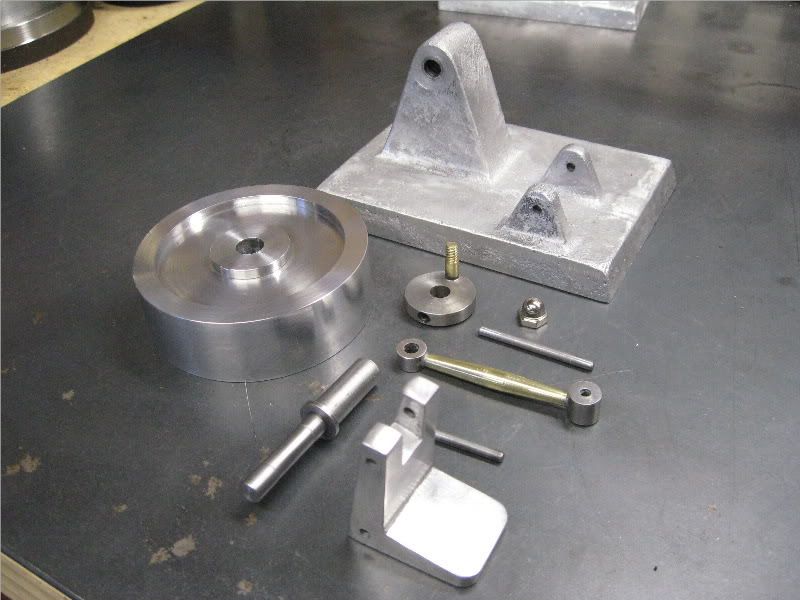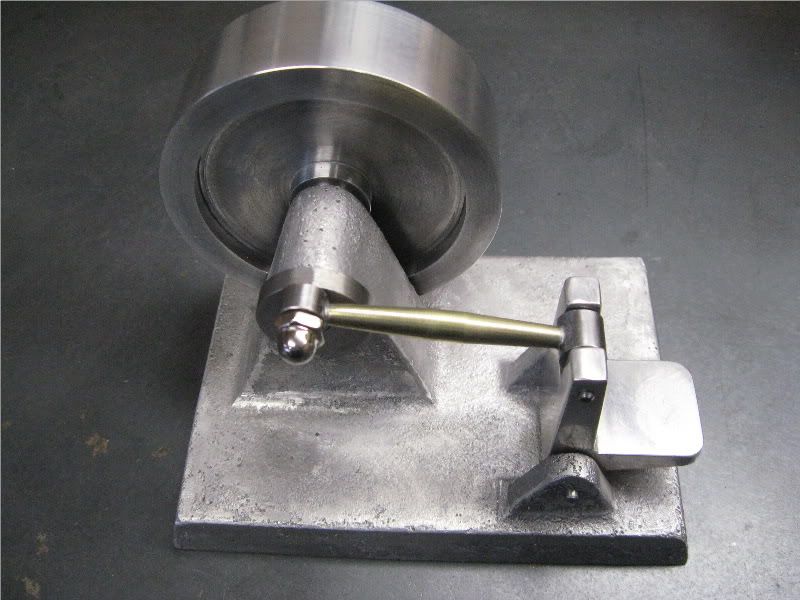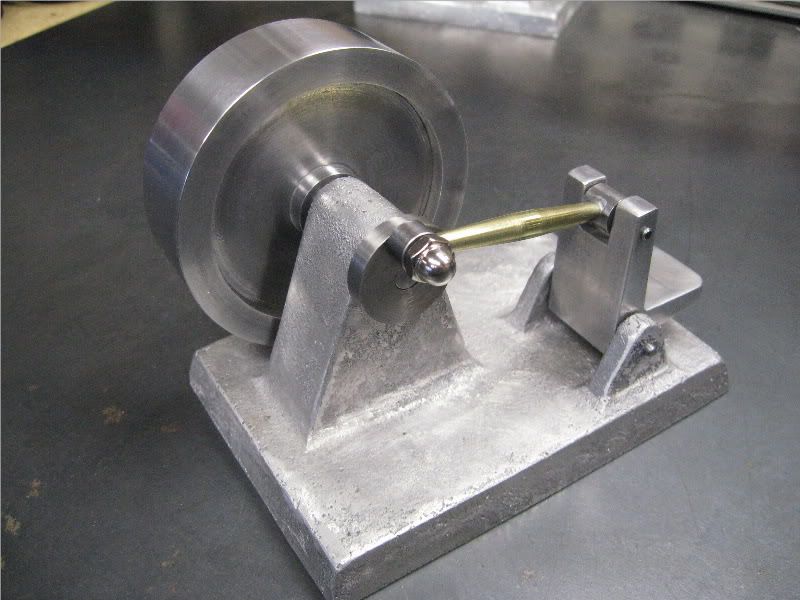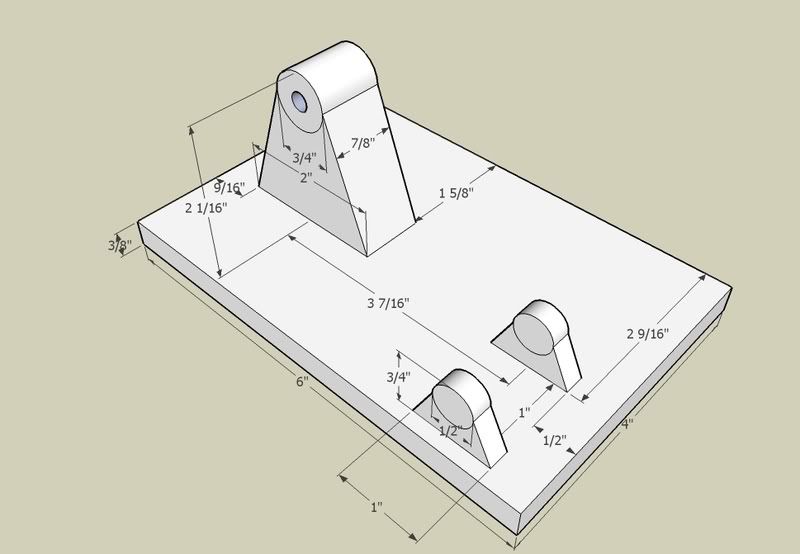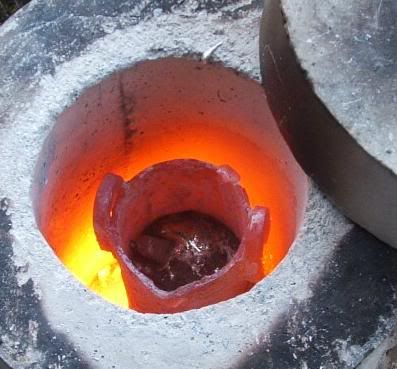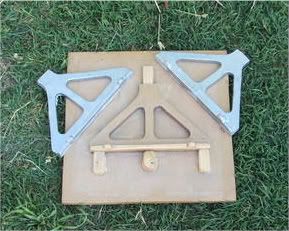Thanks everyone for the nice comments. The encouragement is much appreciated.
I will try to answer some of your questions:
Bogstandard: Have you a rough sketch with dimensions?
I have a simple layout sketch done in Sketchup (see below). I like this program very much for getting a feel of the look and layout of a part. Does anyone else use this? It is free download at:
http://sketchup.google.com/
I also use Designcad for exact dimensioning of making templates for patterns. I generally always make drawings to use as guides, but most of the time I don't let them stop me from modifying things as I go along!

Dickeybird: what's the difference between open & closed casting? Closed = pattern buried in the sand with the molten metal poured down a flue?
Open & Closed is my own terminology.

I call open pouring into the bottom of the flask (cope?) without the top (drag?) in place. This was an experiment with this engine, trying to save having to ram up the drag and cut gates and sprues. I didn't like the result. Closed pour is as you describe.
I really enjoy casting. I like the look of cast metal. If you have a good scrap source it can be very inexpensive. I have about $150 USD in my foundry, 25% of that is in the propane regulator.
I use "green sand" to save money and this is the hardest part of the whole process, mixing and tempering the sand after a shake out. I hope to build a sand muller soon and have been gathering ideas and parts to do so.
cfellows: What is the pattern made from?
The patterns are made of medium density particle board and wood. Simple to make and easy to modify. I like making my mistakes in the pattern before I commit to metal.

The are sprayed with a fast drying primer/sealer and coated with an auto paste wax to prevent wicking water from the sand.
Thanks again for all your comments. I used humble in the description of this engine, but what I meant was simple, straight forward, unadorned. I enjoyed the whole process of building this project and learned a few things along the way. I am happy with the result. If I wasn't I don't think I would of submitted it for your review! :

AL
